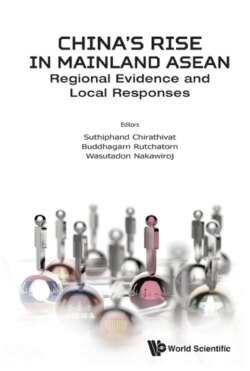Читать книгу China's Rise in Mainland ASEAN - Группа авторов - Страница 21
На сайте Литреса книга снята с продажи.
2.3.The Goals and Characteristics of China’s New Era
ОглавлениеThe most recent and comprehensive document further elaborating on the thought discussed above is undoubtedly the lengthy report titled “Secure a Decisive Victory in Building a Moderately Prosperous Society in All Respects and Strive for the Great Success of Socialism with Chinese Characteristics for a New Era,” which Xi Jinping delivered at the 19th National Congress of the CPC on October 18, 2017 (Xi, 2017g). Among the many important issues raised and discussed in the document, Xi reiterates his narrative of the history of China. This narrative begins with the history of Chinese civilization, which has been in continuous existence for more than 5,000 years and has contributed numerous major achievements to the progress of mankind. China, however, failed to capture the earliest trend of industrialization and fell into the “darkness of domestic turmoil and foreign aggression” with the Opium War of 1840 (Xi, 2017g, p. 11). Many attempts were made by people with heroic intentions and deeds to liberate the nation from its miserable condition, but they all failed because of their inability to change the nature of the old society and consolidate the power of the Chinese people. The “Chinese Dream of National Rejuvenation,” as he terms it, began with this struggle and became successful at its earliest stage after the CPC was founded and finally achieved its goal in governing the country. After that, China went through many phases of ups and downs in the attempt to genuinely develop and rejuvenate the nation (Xi, 2017g, pp. 11–12).
The policy of reform and opening up led by Deng Xiaoping resulted in “three strategic goals for achieving socialist modernization in China.” These include, first, the provision for people’s basic needs and a decent standard of living, which has been significantly achieved. Second, the party aims to develop China into “a moderately prosperous society with a stronger economy, greater democracy, more advanced science and education, a thriving culture, greater social harmony and a better quality of life” by the year 2021 when the centenary of the CPC will be celebrated. After that, within a period of 30 years until the centenary of the PRC, China will arduously develop itself in order to “have basically achieved modernization and turned China into a modern socialist country” (Xi, 2017g, p. 23). The period of three decades is divided into two stages. During the first stage from 2020 to 2035, endeavors will be geared towards the basic realization of socialist modernization. Among the many goals to be achieved is that “China’s economic and technological strength be increased significantly,” and that “China becomes a global leader in innovation.” In other words, China will be able to surpass the middle-income trap. The second stage will cover the period from 2035 to 2050. At the end of this stage, China will hopefully have achieved its all-round goals as a modern socialist country; among many of its achievement will be that “China has become a global leader in terms of composite national strength and international influence” (Xi, 2017g, p. 25). We should note the precise terms being used here. At present, China views itself as a “major country” (see, for example, Xi, 2017g, pp. 17, 53). Within the next 15 years, China will become a “global leader in innovation” with the strength of productive forces and relations of production. Within the next 30 years, China will be “a global leader” in the international arena. To be sure, as Xi has affirmed, this position of global leader is totally different from a hegemon seeking dominant control in global politics.
